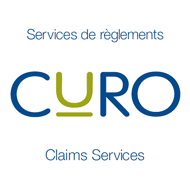Repairing Your Property
Step 1: Emergency services
For any damage covered by your home insurance policy, we will pay for the emergency services required to stabilize your property to prevent further damages. The invoice for the work will be in your name but sent directly to us for review and payment. Your claim professional will discuss your coverage with you and will provide a copy of the emergency services estimate for your records.
Emergency services may include:
- Moving your belongings to safe storage or sending items to an approved facility for cleaning and restoration
- Protecting undamaged property
- Extracting any standing water
- Removing damaged building materials like carpet and drywall
- Boarding up or securing your property
Step 2: Repair estimate
Once any emergency services have been completed, we’ll need an assessment of the remaining work required to finish the repairs and bring your home back to its pre-claim condition. This repair estimate can be provided by any of the following professionals:
Your own contractor: If you already have a contractor for the repairs, we require that a detailed written repair estimate be provided to your claim professional, along with photographs. This information will then be reviewed by one of our in-house property appraisers for approval.
Preferred Contractor Network: If you do not have a contractor you wish to use, we will request that a preferred contractor prepare a repair estimate. The estimate will be based on current labour rates in your area and materials of similar kind and quality. Your claim professional will thoroughly review the estimate of repair with you.
Step 3: Select a repair and settlement option
As the property owner, it’s up to you to decide who will complete repairs to your property. You may choose one of the following options
- Hire your own contractor to complete the repairs based on the appraiser’s estimate.
- Take a cash settlement and complete the repairs on your own. (NOTE: Cash settlements do not include expenses typically charged by the contractor such as profit, overhead, and taxes, and will factor in age and condition of your property before the loss.)
- Proceed with repairs using one of our vendors from the preferred contractor network.
Step 4: Complete the Schedule of Loss form
If any of your personal belongings have been damaged or stolen, your will be asked to list the items on the Schedule of Loss form which will be provided by your claim professional. In some cases, assistance can be provided onsite by the preferred vendor.
You’ll need to include a full description, model number, age, purchase location, and the approximate replacement cost for each item wherever possible.You’ll also need to provide documentation supporting the ownership and values claimed for each of the lost or damaged items. This can be in the form of original receipts, manuals, or appraisals. If you’re not sure if an item can be repaired, please arrange to have it inspected by a professional.
Example of a completed Schedule of Loss form:
